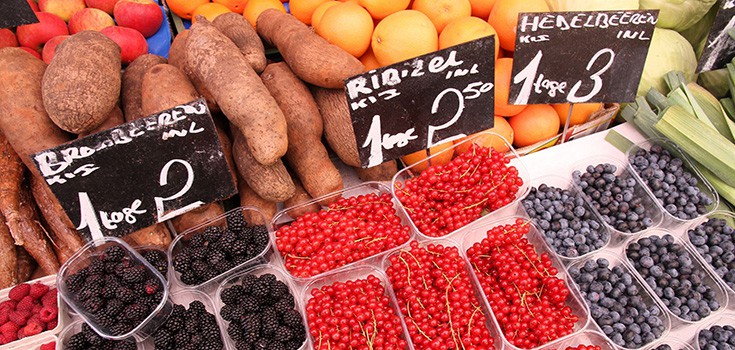Rising Food Prices Continue to Climb, with Prices Up 10% in July Alone

Food prices are rising, and consumers are feeling it. Rising food prices aren’t only hitting America, they are happening around the world. Costs have gone up 10 percent between June and July alone, with corn, soybeans, and wheat reaching record prices. This outpaces the United Nations Food and Agriculture Organization’s estimate of a 6 percent increase.
Rising Food Prices and Vulnerable Populations
While we may all see small changes in the grocery store and in grocery bills, World Bank president Jim Yong Kim says countries reliant on imported grains, especially “Africa and the Middle East are particularly vulnerable.”
The World Bank attributes the price jump mainly to the American heatwave and drought in Eastern Europe, which has hurt corn and soy in the US and wheat in Russia, Ukraine, and Kazakhstan. Use of corn in the production of ethanol in the U.S.—accounting for up to 40 percent of corn crop—has also been blamed for the price jump.
But of course this isn’t the beginning of rising food prices. Costs have been going up for some time now; you can see a food price index we covered around just last Thanksgiving. The food index count, which is an overall score reflecting the total price of the top 6 food commodities, rose to 215 in December of 2010 — up from 90 in the year 2000. Sugar spearheaded the spike, hitting only 2 points away from the 400 mark in December of 2010.
Rice is the only staple that has actually decreased in price (by 4 percent).
G20 Unsympathetic to Those in Need
“We cannot allow these historic price hikes to turn into a lifetime of perils as families take their children out of school and eat less nutritious food to compensate for the high prices,” Jim Yong Kim added.
The World Bank is pushing governments to protect at-risk communities, but the G20 group of leading economic powerhouses is waiting until the USDA reveals September estimates for the year’s harvest. Aid group Oxfam decries the “wait and see” approach, but likely to little avail.
Monsanto and Subsidized Farmers
There’s some epic irony at work when Mother Nature wreaks havoc on genetically modified corn, soy, and beet root which have been slowly poisoning consumers for the last decade. Unfortunately, her work also hurts organic farmers trying, as we all are, to desperately make a living.
Millions worldwide will go hungry as food prices rise, but crop insurance will help out subsidized farmers—many of them being the very ones growing Monsanto crops endorsed by the US government.
And who pays for up to 60 percent of insured crops, including GMO and pesticide-riddled varieties? The average taxpayer. So, we have that to think about, too, when we pay a little more for our daily bread.
Additional Sources:
